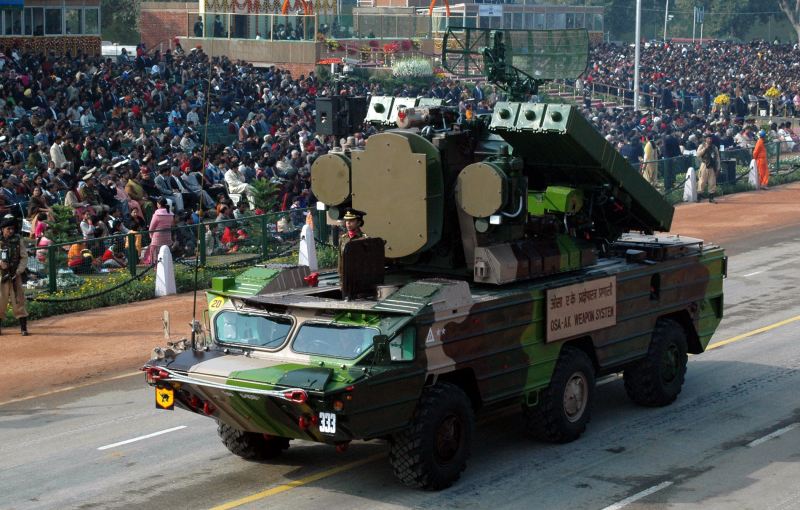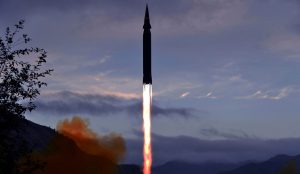
- Celebrates 29th Raising Day
- Time to pause and look-see

By Lt. General (Dr.)VK Saxena (Retd.)
New Delhi. 10 January 2021. Raising Days, besides being events for celebrations and festivities, are also solemn occasions to pause and look-see which way are we headed? Is the road ahead leading to the right destination or there is a need to make a course –correction? That said, time and tide have brought the Ground Based Air Defence (GBAD) of the country to a point today where there is that proverbial ‘fork in the road’. We need to decide which way to go. That should be one of the first agendas on the 29th Raising Day of the Corps of Army Air Defence, this 10th of Jan 2022.
Why such thoughts as revamping/ re-arming etc. actually come to the mind? It is, because the new and emerging threats on the horizon and beyond, are rendering conventional air defences of yesteryears nearly ‘obsolete’ and redundant today. The choice is simple- ‘either revamp or perish’.
In that, it is the sense of the author that if air defenders do not change course today, they will be overtaken by the newer dimensions of the threat tomorrow and would be found wanting in the ‘next round’.
What are some of the revamp/re-equip/ change-over ideas, this raising Day? The thoughts of the author are enumerated.

DEAL WITH LITTLE MONSTERS
Unmanned – a growing lethality
If the 13 drone-swarm attack on Russian air base at Khmeimim and naval facility at Tartus both in Western Syria on 05 Jan 2018[i] is any indication; if the deadly devastation of Saudi oil facility by just 14 drone-swarm on 14 Sep 2019 destroying oil production worth a whopping 5.9 million barrels any alarm[ii] or if the drone attack in the gut of Jammu air base on 26 Jun 2021 is any indication – IT IS CLEAR THE LITTLE MONSTERS HAVE ARRIVED[iii].
Well past their baby steps of ISTAR (intelligence, surveillance, target acquisition and reconnaissance) machines followed by strap-on combatized drones, today the ‘unmanned phenomenon’ has changed the very DNA of how the air threat will be prosecuted in the foreseeable future- a revolution of sorts!
Time and technology has made way for the intelligent and totally autonomous unmanned threat vehicles operating shoulder-to-shoulder with their manned brethren, wherein, they not only increase the situational awareness and kill potential of the mission manifold, but also, they give a run for their money to the ‘manned’ when it comes to operational specs, endurances (without crew fatigue), sheer quantum of warhead on board etc. to name just a few virtues.
Standing apart from this genre are the real smart ‘small monsters’ either operating in ones or few, or in large swarms gridded together as an intelligent cohesive body with a ‘mind of its own’ and posing a great threat. Their claim to success lies in their ability to defy radar-based detection owing to their miniscule radar cross-section (referred to as RCS which, very simply is the measure of detectability of an object to a radar). This coupled with their sheer numbers give them the unprecedented capability of overwhelming the finite surveillance and kill capability of a conventional air defence system.

WHAT NEEDS TO BE DONE?
Following points are stated:-
- There is a need to usher a drone-centric mind set and a drone-centric kill approach wherein LOW-COST THREAT VEHICLES DEMAND LOW- COST KILL OPTIONS.
- That said, apart from some, high volume and high rate of fire guns in the GBAD inventory (ZU232B towed guns, ZSU 234B1 Schilkas, or the Tunguska- gun fire), using prohibitively costly radar-controlled SAMs in countering low-cost small drone threat will be self-defeating. It will not only amount to killing a fly with a sledge-hammer, the highly skewed cost differential will make the defender loose out sooner than later.
- Besides the gun-based kinetic kill solution stated above, the requirement is to quickly change gear and get into some fast-track procurement of anti-drone weaponry. This includes a complete spectrum starting from strap-on Electro-Optical (EO) sights which can be fitted on mainframe rifles and MMGs (AK 47, AK203 etc.) to a whole lot of RF drone guns[i]. While the Navy has recently ordered some 2000 such EO sites from Israel[ii], very effective RF drone guns are being made indigenously by Indian players (i.e. M2K RF Drone Gun).
- Another important area to re-equip is the capability to kill the drones on the Electronic Warfare (EW) route. A complete spectrum of weapons are there both in the domestic, as well as, foreign market; RF Jammers, hacking devices, phishing devices and more. Vendors are even offering airborne soft-kill solutions, ‘electronic fencing’ solution for drone-swarm threat and more. A quick and relevant selection is called for, followed by prompt procurement action.
- DRDO has recently demonstrated an integrated counter-drone solution called ADS (anti-drone-system). It has EO/IR sensors, as well as a frequency modulated continuous wave (FMCW) radar for small RCS drone detection up to a range of 4 km coupled with an RF/GNSS jamming system with a range up to 3 km and a laser kill system with a range of 150m to 1 km. The requirement is to catch up on its production moving quickly beyond the prototype to build numbers for the field force.
- There is also an urgent need for the MoD to fully integrate the capability of the private sector in fielding anti-drone solutions. Recently Zen Technologies Ltd has demonstrated their ADS. It is based on dual mode EO+ AESA radar detection and RF kill. It is a multi-layer, multi-sensor architecture aimed at providing comprehensive security against drone attacks. Air Force is in the process of acquiring this system (details classified).
- Work is also in progress in the industry for combining the soft-kill solution with the kinetic kill provided by high rate and high volume of fire air defence guns.[i]
- In addition to fielding the currently available system, there is a requirement for both the DRDO, as well as, the private industry to field futuristic anti-drone solutions based on laser-kill or directed energy kill i.e high power microwave (HPM) and charged particle beams (CPB) based soft kill systems ( later two at a point in time in future).

DEAL WITH THE INVISIBLE
What is the issue?
Following points are stated:-
- The stealth threat from our potential adversaries is growing at a fast pace. Not only stealth-capable combat aircraft (J-20, FC 31, J 21 etc.)[i] are getting steadily inducted in the threat inventory of China (by proxy with Pakistan at a point in time), the stealth muscle is increasingly finding a place in the unmanned platforms (GJ 11, WZ -7 etc)[ii], as well as, the attack helicopters ( WZ-10, WZ-19 – in pipeline).
- With the increasing range and depth of air threat vehicles acquiring the stealth capability, their detection by the conventional radars held by the GBAD inventory of radars today will become more and more difficult This will allow freedom to such vehicles to cause great damage and destruction with impunity.
What needs to be done?
The urgent operational requirement is to quickly re-equip the air defence arsenal with anti-stealth detection capability. Following is required:- While the LRDE/DRDO (as well as, the lead players in the private domain – L&T, Tata, Mahendras and others) have reached a position where every type of conventional radar ( including the AESA and its passive version PESA) stands realised, the requirement is to realise ant-stealth radars such as Laser based radars, Passive coherent radars and in future, the Quantum radars.
- The user must ensure that while futuristic anti-stealth radars can only be made available at a point in time, the old ‘gems’ ( Russian VHF and HF radars such as P 12, P-19, PRV 12, PRV 16) which are on their way out/ or have already faded away, are retained/recalled and kept ‘alive’ to the last breath as these are excellent anti-stealth radars.
- As stated for anti-drone solution, the EO surveillance devices must be the new normal to stand in along with radars as these can also detect stealth to some extent.

GEAR UP TO COUNTER THE HYPERSONIC THREAT
Much has been stated lately in the open source on the growing hypersonic threat from China. Before anything else, the following truth based on the sense of the author, needs to be confronted:- The hypersonic threat is NOT IMMEDIATE. It WILL become relevant (read critical/matured) only at a point in time in the future.
- For the hypersonic arms race, there are ‘others’ (not discussed) on the Chinese competitive ladder. We need to do what is required in our scenario.
That said, following is stated as to the threat :-
- China is moving forward along both the verticals of hypersonic weaponry, namely, Hypersonic Glide Vehicle (HGV) as well as, Hypersonic Cruise Missile (HCM) . Technical details – not covered.
- Way back in Dec 2017 China tested an HGV on board the ICBM DF 17. It flew to a range of 1400 m and hit its intended target ‘within meters’[i]
- In the following year, on 03 Aug 18 China successfully tested an HCM named Xingkong -2 or Starry Sky -2. Claimed to be capable of carrying multiple nuclear weapons the HCM was projected as unstoppable by conventional air defence and ballistic missile systems[ii].
- In Nov 2021, a Chinese HGV ‘circled the globe’ in low-orbit space before cruising to its intended target which it reportedly missed by some 30 km. The capability cliché to ‘hit anywhere on the globe’ was much played up by sponsored state media machine[iii].
What Needs to be done?
The ‘IMMEDIACY’ as well as the ‘RELEVANCE’ of the threat in our scenario must be kept in realistic focus at all times ( not discussed further).
- Weapon-to-weapon, albeit at a tactical level, our arsenal also has hypersonic speed weapons (‘Shaurya’ short range SSM has a hypersonic speed of 7.5 Mach (9187.8 km/hr) and a range of 700 m. BrahMos II Cruise missile which is an upgraded version of BrahMos I (speed 2.8-3.0 Mach, range 290 Km) is a likely hypersonic missile under development ( speed 8 Mach). Hopefully road ahead will take us further on the path of HGV and HCM with strategic dimensions.
- As to the defence against hypersonic weapons while cutting edge threat is still at the horizon , we need to do the following:- Gear up for the detection challenge by building space-based surveillance capabilities with a strategic foot print. The good news is that we are not only a strong and front-ranking space-faring nation, but also, have advanced capabilities in satellite-based surveillance with sub-metric accuracy. The challenge of detection of hypersonic weapons from the medium of space will be within our reach and capability. There is a need however to focus on this specific need and build the required infrastructure and systems.
Compared to building the capability per se, the bigger challenge will be to integrate the space-based surveillance systems into ground/air based kill systems. In addition, a full-scale anti-hypersonic kill system will have to be placed in space at a point in time in future. It is indeed a tall order.
- Building kill systems for hypersonic weapons will be a huge challenge. Keeping in mind the nuances of hypersonic threat, nothing but an ‘instantaneous soft kill’ will be the only answer. The means could be laser, HPM or CPB weapons. These could be based on ground, sea, subsurface, air or space.
- Putting together such a system will be a herculean task. Unless thinking goes into it right now, we will fall short of time and space.

Courtesy: 24newshd.tv
ADJUST TO THE NEW CENTRE OF GRAVITY
Huge monster multi-platform radar systems (in excess of 50 tonnes – examples classified) and such like SAMs will be a NO GO in the northern mountainous and high altitude region.
- The requirement will be of light-weight rugged and mobile systems that are either self-propelled or are mounted on light High Mobility Vehicles (HMVs).
- Many of the current systems basically designed for the western borders will have to be re-designed as to reduce weight and increase mobility.
- Two types of GBAD weaponry will be in high demand; 1. Low Level Light Weight Radars (LLWRs) which are mule/man portable and quickly deployable at higher reaches and the man-portable shoulder-fired SAMs (MANPADS). There are deficiencies in this field (numbers classified). This needs to be made up sooner than later.
GET OVER THE JINX OF 99
Particularly the GBAD (also relevant for many other branches) suffers from the jinx of 99. By that it is meant, that many a weapon and support systems continue to linger for years and decades on ‘just about happening’ stage but remain short of that last mile. We need to get over this jinx.
Some action points are stated:
Out of two main-frame towed air defence guns, while partial upgrade of some numbers of one gun (quantum classified) happened, the other reached the finish point of contract and that’s it (details not discussed).
This other gun is more relevant for being fielded for the small drone kill, duly coupled with EO based surveillance and RF+EW kill system. It is imperative that this gun also be put in the upgrade cycle in getting its own EO fire control System ( day camera, night camera, laser range finder, fire control computing device).
- The MANPADS which are so critically required for the new dimensions of threat are happening for 11 years and counting. The NO GO of the case for multiple reason is nor relevant. What is relevant is that we have the indigenous capability of making MANPADS.
Ground work for the same is partly done (details classified) . Besides this, any number of vendors will be too eager to plug gaps on the JV/MoU route both on the Strategic Partnership (SP) or the Make II model. We need to move and provide our forces this very important weapon system.
- Talking of tactical battle area ( TBA) the successor to the current self- propelled (SP) weapon system cannot be hanging fire eternally. If the weapon system finalised (details classified) runs into troubled waters, the show must go on.
Our private industry is ‘capable’ and ‘enabled’ to provide the GBAD with the SP weapon system it needs. They will get the best from the world and make it ‘right here’. We need to repose our faith in them. K9 Vajra, M777, ATAGs, Dhanush… these are not small achievements.
- The eternal and unending trial phenomenon must see the end of the day and the Services must finally get their Quick Reaction SAM (QRSAM). A good weapon system stands realised by the public sector but still short of finish line. (glitches not discussed). QRSAM must become a reality sooner than later is the bottom line.
- While we can celebrate the start of induction of S-400, more important is to ensure the adequate numbers are built up on the indigenous BMD capability (DRDO Programme AD) route. This is said in the understanding that our strategic vulnerabilities are many and sheer quantum of fire units will be required to keep them safe against the burgeoning might of SSMs, especially from our not-so-friendly neighbour in the North. (further details classified).
- Finally the Battle Management and Command and Control System (BMC2) as the umbilical chord for the conduct of air defence battle at the national level must not only remain upgraded to the cutting edge, it must also leave behind all its glitches related to inter-Service connectivity seamless hand-shakes and more. It is stated with pride that the same is progressing fast.
These are the little thoughts offered humbly to the stake-holders.
May victory be yours.
Akashe Shatrun Jahi
Happy Corps Day to all Vayu Rakshaks.
(Lt. Gen.(Dr.)VK Saxena (Retd.) is a Delhi-based defence analyst former Director General Army Air Defence. He is a Distinguished Fellow at VIF and a Visiting Fellow at CLAWS. The views in the article are solely the author’s. He can be contacted at editor.adu@gmail.com).
[i] https://economictimes.indiatimes.com>hgv:china’s -advanced-hypersonic-missile-threat -to-India.>Accessed on 09 Jan 2022.
[ii] https://www. indiatoday.in>world’s-first-hypersonic-aircraft-that-can-fire-nuclear-warheads-successfully-test-fired-by -China. Accessed on 09 Jan 2022.
[iii] “China’s hypersonic missile test…” at www.timesofindia.indiatimes.com. Accessed on 09 Jan 2022.
[i] “Report : new stealth aircraft and capabilities in Chinese air arms…, “ at www. Airforcemag.com. Accessed on 09 Jan 2022.
[ii] “China’s most advanced stealth drones make air show debut,” at www.globaltimes.com. Accessed on 09 Jan 2022.
[i] “An important milestone achieved quietly,” at www.CLAWS.in. Accessed on 09 Jan 2022.
[i] “12 ways to defend a drone attack…,”at www.defence.capital/2020/12/01/12. Acccessed on 08 Jan 2022.
[ii] “Navy orders Israeli SMASH 2000 plus systems to tackle drones,” at www.theprint.in. Accessed on 08 Jan 2022.
[i] “Khmeimim air base,” at www.en.m.wikipedia.org. Accessed on 08 Jan 2022.
[ii] “Two major Saudi oil installations hit by drone strikes” at www.nytimes.com , Accessed on 08 Jan 2022.
[iii] “Drone threat – the big picture,” at www. Vifinfdia.org. Accessed on 08 Jan 2022.





























































































































